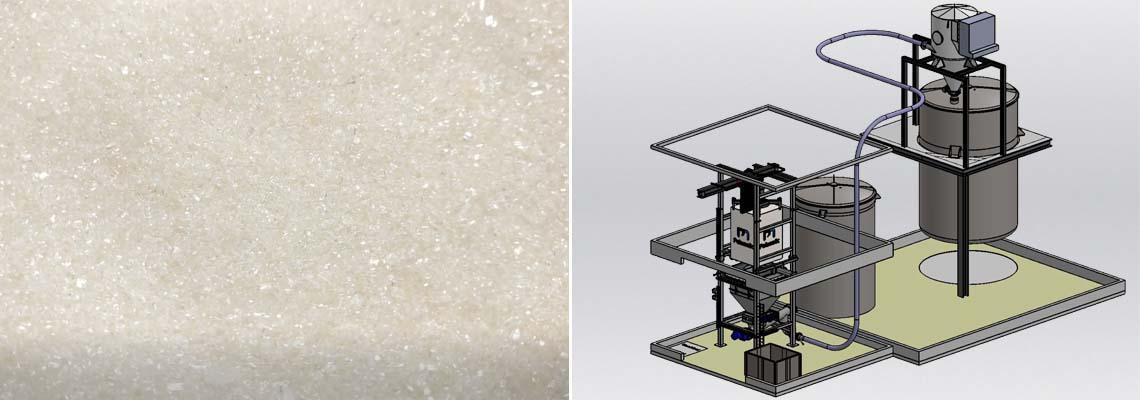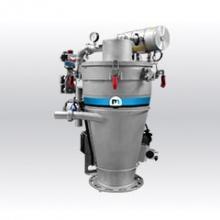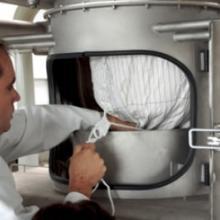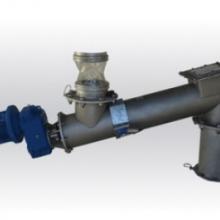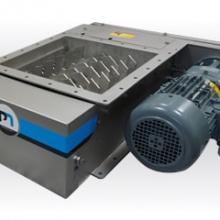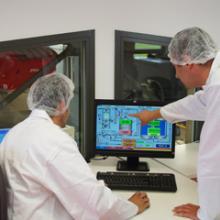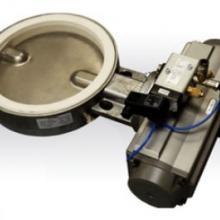Processed powder : Sodium hypophosphite
Manufacturing process for sealants
Project Objective:
Manufacture and installation of a new turnkey process line for the production of coatings and sealants in an ATEX hazardous location.
The solution:
To deliver and industrial system solution that would allow the delivery of sodium hypophosphite from big bags and transfer via an automated pneumatic conveying line to a downstream reactor vessel. Since solvents are involved in the production process, the installation must be designed to an ATEX 2 IIB explosion protection rating.
The Equipment:
- Indoor Enclosure for Big Bag Unloading Equipment
- Big Bag Emptying Station
- Pneumatic Conveying System
- PLC Automation Cabinet
The client is a World leading designer and producer of water-based rheology additives. Located in The Netherlands, the manufacturer deploys its products in several areas, including: adhesives & sealants, ceramics, coatings & inks, construction, home care, mineral processing, paper, personal care and water treatment.
What are rheology additives?
Rheology modifiers are common additives used in nearly every industry to adjust both the overall viscosity magnitude and control non-Newtonian behaviors such as shear thinning or shear thickening. It is an organoclay anti-settling agent for solvent-based paints, designed especially for use in solvent-based system including intermediate and low polarity range organic liquid. Rheological additive in paint is an improved organoclay bentonite.
What is Sodium Hypophosphite?
According to Wikipedia, “Sodium hypophosphite (NaPO2H2, also known as sodium phosphinate) is the sodium salt of hypophosphorous acid and is often encountered as the monohydrate, NaPO2H2·H2O. It is a solid at room temperature, appearing as odorless white crystals. It is soluble in water, and easily absorbs moisture from the air. Sodium hypophosphite should be kept in a cool, dry place, isolated from oxidizing materials.”
What is the industrial use for Sodium Hypophosphite?
Like other hypophosphites, sodium hypophosphite can reduce metal ions back into base metal. This forms the basis for electroless nickel plating (Ni-P), which is its main industrial application. With this method, a durable nickel-phosphorus film can coat objects with irregular surfaces, such as in avionics, aviation and the petroleum field.
1. Big Bag Unloading Room Enclosure Installation
In order to simplify the installation and keep project costs down, it was decided that a separate enclosed room inside the production facility should be installed. This was done to protect the big bag unloading equipment, as well as the PLC cabinet, to avoid the need for hazardous area rated designs (higher costs).
The enclosure was integrated with the following equipment and requirements:
- Super sack discharge station
- Electrical cabinet
- Big bag compactor to remove and contain empty FIBC
- Free travel area around station for maintenance
The enclosure consisted of the following design details and technical characteristics:
- Room dimension on the floor: 4350mm x 4640mm inside (outside dimension +/- 300mm of inside dimensions)
- Height under roof: 6000mm
- Building manufactured in 2 parts
- Wall cladding JI WALL 1150-40 insulation PIR density 45kg/m3 (CFC free)
- Roof cladding JI WALL 1000-40 insulation PIR density 45kg/m3 (CFC free)
- Gutter with drain to the existing ground
- 1 insulated roller gate – Dimensions 2500mm x 3000mm => Insulated roller shutter, the door will be assembled outside the building
- Steel structure manufacture with square profiles
2. FIBC Unloading Station – EasyFlow® 150 with Electrical Hoist Lift
The production system starts with our Easyflow® series big bag emptying station. The monorail electric lifting hoist is capable of loading super sacks with a max weight of 3300 lbs. The operator takes the big bag straps and secures them to the FIBC handling cross on the electric hoist. It is then lifted onto the station via the PLC and gently lowered onto a U-shaped puncture blade. The integrated big bag opener uses the weight of the big container to cut a U-shaped flap around the discharge spout of the big bag. The cutting blades are made of stainless steel and can be removed from the station for maintenance. Pneumatically controlled massage cylinders help squeeze the sides of the big bag to eliminate product bridging for full discharge.
The big bag puncture blade sits inside a buffer hopper sized to a capacity of 600 liters, or storage for one full jumbo bag. Under the big bag unloading station is a lump breaker, which was integrated into the unit to help keep powder free-flowing and eliminate any lumps that would form due to compression and exposure to humidity. It is important to keep the material in its powder or granular state to keep a consistent air-to-material ratio mix in the downstream pneumatic conveying line. The lump breaker consists of double shafts with rotating knives that spin at a fixed speed to break up any lumps it may encounter.
3. Pneumatic Conveying System
Under the big bag discharge station hopper is a tubular screw conveyor designed for the material transfer and transition to the pneumatic powder conveying system. The objective of this mechanical conveyor is to extract the product from the big bag buffer hopper, regulate the flow for feeding into the pneumatic conveying system, automatically ensure the fluid transfer and optimal flow rate and compensate for variations in the product (density, particle size, etc.).
The operation of the screw conveyor ensures that the air to material mix ratio is regulated by the flow of the auger transfer. The screw is controlled by a vacuum sensor regulated by the PCL for speed control in real time (increase or decrease throughput rate). The advantages of automated control of mechanical transfer include: constant optimal flow rate of the powder regardless of changes in big density, avoids plugging of the pneumatic conveying line (screw will stop if vacuum is too high) and better extraction for materials that tend to bridge or rat-hole.
For the method of pneumatic transfer, vacuum conveying was used due to the avoidance of heating up the ambient air and dust leakage that may occur due to damaged or worn-down pipe connections. A cyclo-splitter (cyclone) is installed at the end of the vacuum conveyance system to collect material and separate the air from the product. Made of 304 stainless steel, it is again sized to convey at a rate of 6 m³/hr and hold a capacity of 500 liters, or one big bag worth of product.
The material enters just below the filter housing located at the top of the cyclone. From there, the material spirals downward along the sides of the cyclone while the dirty air passes through the filter cartridges and out the vacuum pump. A reverse jet-pulse cleaning system consists of a compressed air tank and nozzles that fit between the pleats of the filter cartridge. It is controlled by a timer on the PLC that periodically sends blasts of air through the filter to keep it from clogging and reclaim any material that is lost to the dust collection system. Other integrated features include vibrating material flow aids, access hatch with position sensor, low level probe (to tell the PLC when to transfer more material), and pneumatic butterfly valve on a 4-20ma positioner. After the cyclone is the tri-lobe vacuum pump sized to transfer material at a rate of 35 tons/hr. It is designed with an acoustic hood sound dampener and installed outside the hazardous location.
4. PLC Automation Cabinet
The Pal’Touch visually programmed PLC provides complete direction over the electronic functions of the entire system. For this project, the client was provided with a Siemens S7-2000, 7” HMI touch screen panel with Profinet communication. A Profibus was also added for external communication with our head office for remote diagnostic capabilities. Palamatic Process can provide other options as alternatives if the client prefers. Palamatic Process designs, assembles and programs all controls panels in-house. Our team of automation engineers include user friendly raw material inputs, lot traceability, operator identification and dosing reliability. The PLC handles and controls the big bag discharge, loss-in-weight dosing management, conveying, dust collection, feeding and hopper selection. Further advantages include our Pal’Assist service for remote connection diagnostics. By integrating an ethernet remote maintenance box, our maintenance team can connect remotely and diagnose any issues within the control panel programming. Our technicians are also available for on-site commissioning and training support.
Other services provided include supervision of the installation and commissioning by our technicians. Palamatic Process has been supplying the powder and big solids industry with big bag handling equipment since 1992. In order to determine what solution is best for your project, contact one of our sales engineers.
Together, our team of experts can provide the right kind of powder filling equipment that will fulfil your every production goal.
Contact one of our experts today for assistance with needed material handling solutions and to request a quote.














